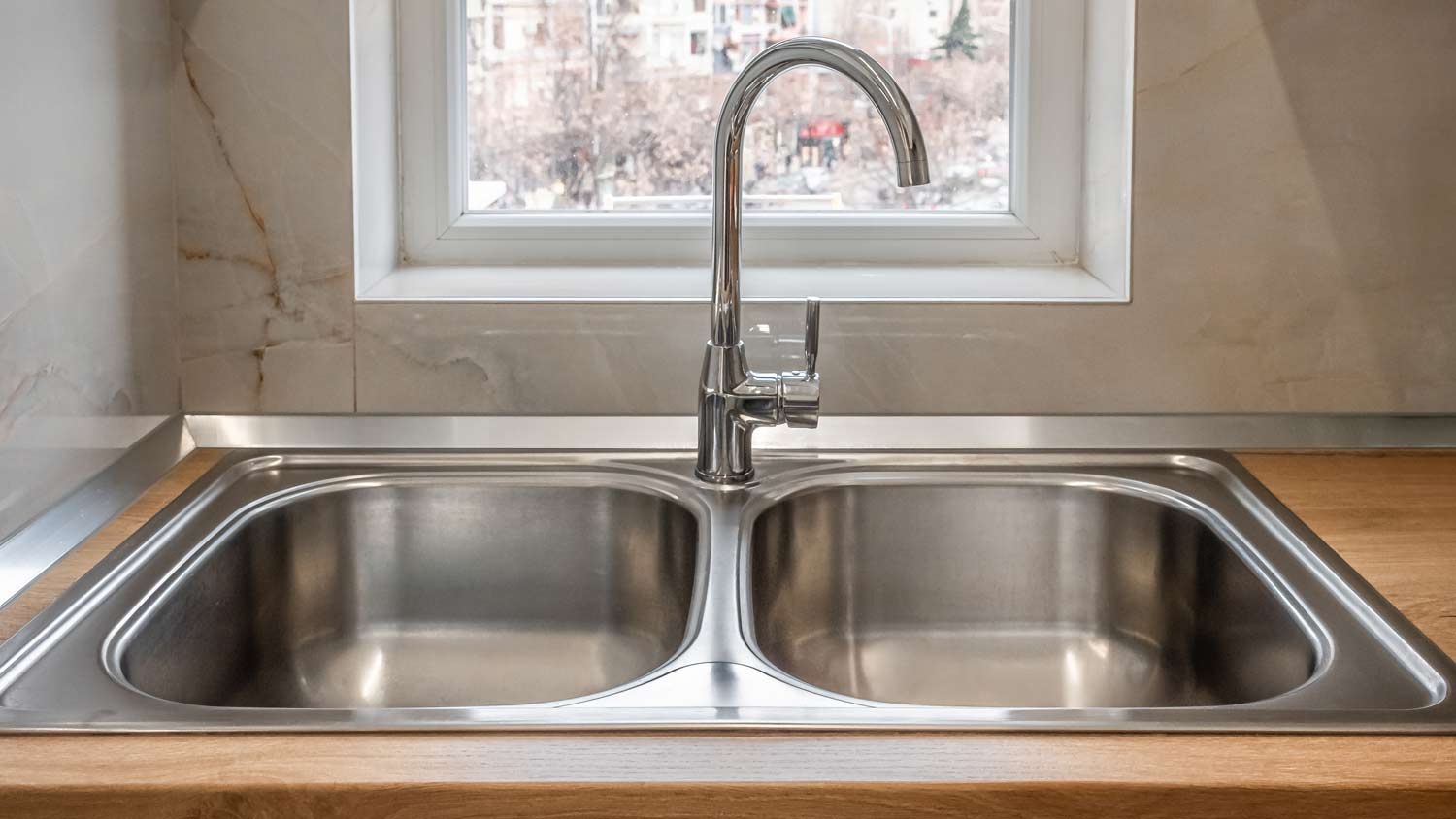How to Clean a Front Load Washer in 5 Steps
Get your laundry back to smelling sweet in no time


- Microfiber cloth
- Scrub brush
- Towels
- Bucket
- Drain brush
- Vinegar
- Baking soda
- Bleach
- Appliance cleaning tablets
Even if you don’t like doing laundry, the fresh smell of a basket of clean clothes at the end of the drying cycle makes it worthwhile. But, if you smell a musty, moldy odor on your clothes after the cycle ends, don’t fret, there is an easy fix. Knowing how to clean a front load washer helps to remove these odors. You only need to deep clean a front load washer once or twice a year with basic cleanings in between. You’ll then be ready to bury your face in that pile of clean, warm laundry again and breathe deep—the scent of a job well done.
Prepping to Clean a Front Load Washer
A big difference between top load and front load washers is that front load machines tend to harbor odor more than top load models. This makes learning how to clean a front load washer especially important.
When prepping for a deep clean, start by unplugging the washing machine. Locate the filter, which is usually located in the lower left corner of the front of the machine. Place a bucket or shallow pan under the filter door and have towels ready.
If your machine has a drainage hose tucked behind the filter door, place the hose in the bucket or pan and drain as much water as possible. Then open the filter door and turn the plastic filter counterclockwise to unscrew it. Some water may leak out as you loosen the filter.
Remove the filter completely and pull any lint and/or debris out of the plastic teeth. Reattach the filter by turning it clockwise until it’s secured tightly. Use your towel to wipe up any water and close the filter door.
If you’re having a problem with drainage in the front loader, you can learn how to drain a washing machine without making too big of a mess. You can follow the same process for cleaning the filter and troubleshooting a drainage problem.
Clean the Detergent and Fabric Softener Tray
If you can pull the detergent tray out, this is the first step to cleaning a front load washer. Let the tray soak in a sink with hot water and a little bleach to loosen any caked-on soap and fabric softener while you do the rest of the cleaning.
Clean the Drain Hose
 Photo: Mariia Demchenko / iStock / Getty Images Plus / Getty Images
Photo: Mariia Demchenko / iStock / Getty Images Plus / Getty ImagesDisconnect the drain hose from the back of your machine, which usually involves removing a butterfly clamp. This hose can generate odors from residue buildup, and it never seems to dry completely.
Clean the interior of the hose using the long drain brush and let it dry. A plumbing snake also works well, if you have one. By keeping your washer’s filter as clean as possible, it can help keep the drain hose a little cleaner.
If you’re not comfortable taking this step, you can always skip it and hire a professional to do it.
Clean the Drum
Check the inside of the drum for any debris, lint, or pet hair. Wipe around the rubber gasket using a damp microfiber cloth. You can also use a 10% bleach solution to wipe this area.
Clean the Door
Use a damp microfiber cloth to wipe down the interior and exterior of the clear glass or plastic on the door. Build up of dirt or grime on the door can cause slight leaks because the door won’t fully shut and water can seep through.
Run a Sanitization Cycle
 Photo: Carol Yepes / Moment / Getty Images
Photo: Carol Yepes / Moment / Getty ImagesFinally, run a sanitization cycle when you clean your front load washer. Make sure the filter and drain hose are securely back in place before plugging in the machine. (You don’t need the detergent tray for this step.)
Add a washing machine cleaning tablet or a mixture of two cups vinegar and one-half cup baking soda inside the drum. Select the sanitizing cycle on the machine and press the start button. It should take 20 to 30 minutes to run the cycle.
After, replace the detergent tray and wipe down the entire exterior of the machine. If odors persist, run another sanitization cycle.
DIY vs. Hiring a Pro
Although you can hire a professional to clean your front load washer, it can be pricey. A local washing machine repair service will most likely charge you for a full repair call, even if it doesn’t take very long to clean your washer.
The average cost for a washing machine repair is $180, although you could pay anywhere from $50 to $450. And if you need to replace any major components, you could pay far more.
If your machine is not operating properly, the repair person may do some cleaning techniques for you as part of the repair process, such as cleaning the filter and drain hose.
Frequently Asked Questions
If your machine’s manufacturer lists a number of steps to follow, such as using a specific brand of cleaning tablet during a sanitation cycle, you should follow those directions rather than using vinegar and baking soda. If your machine is under warranty, not following the directions of the manufacturer could void your warranty.
The front load washer has a rubber gasket inside the door that prevents water from leaking out as the machine operates. The gasket does its job so well that it doesn’t allow evaporation from inside the drum, which can lead to the formation of odors related to dampness. The top loader doesn’t need a rubber gasket because of the position of its lid, so evaporation occurs easier.
In between deep cleanings, you really only need to clean the filter, the drum, and the door. Run a sanitization cycle and then wipe down the exterior of the machine. You can skip cleaning the drain hose and the detergent tray, as these steps only need to happen once or twice a year, depending on how often you use your washing machine.














